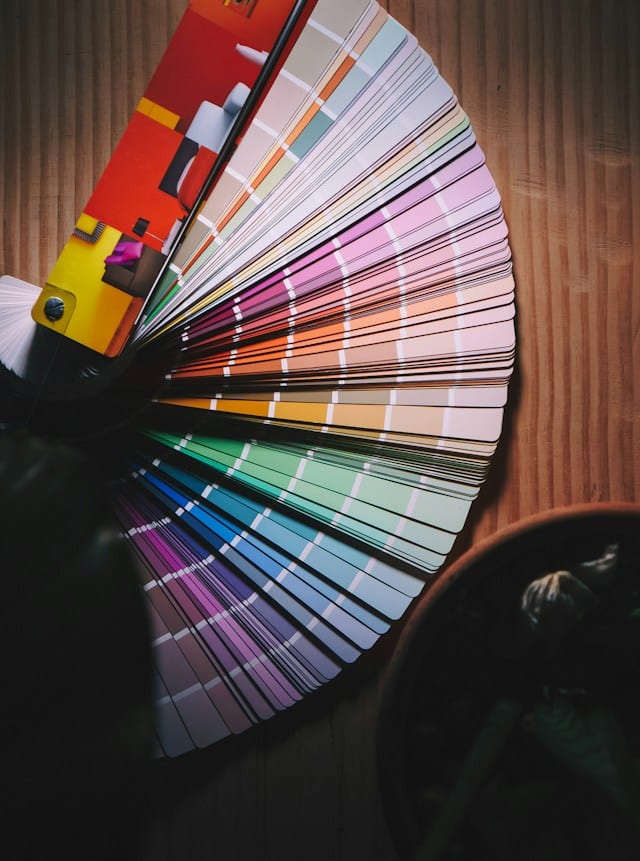How to choose the right wall paint color

Painting your walls is a refreshing way to transform your space and express your personal style. Yet, the myriad of available color options can make the decision process overwhelming. The market is saturated with countless shades and hues, each offering a unique vibe, feeling, and ambiance to your home. From warm, cozy pastels to bold, vibrant colors, the possibilities are endless.
In this guide, we aim to simplify the process and provide useful tips to guide you in choosing the right wall paint color for your needs. We will walk you through understanding the color theory, considering the room’s purpose, taking into account the lighting, opting for neutrals or bold colors, and testing colors before making the final decision.
Avez-vous vu cela : Storage ideas for kids’ toys
Understanding the Color Theory
Color theory is an essential starting point when it comes to choosing the right paint color. It’s a complex realm of color relationships and emotional responses that could be evoked by different hues.
Comprehending the three primary colors (red, yellow, and blue), the secondary colors (which are a mixture of the primary colors), and the tertiary colors (a combination of primary and secondary colors) is crucial. This knowledge can help you find out which colors go well together and create a harmonious atmosphere in your room.
A lire aussi : The keys to a zen and uncluttered interior
The color wheel, which is a visual representation of color theory, is a useful tool in this regard. It helps you understand how colors relate to each other. For instance, complementary colors, which sit opposite each other on the color wheel, can create a vibrant contrast when used together. Analogous colors, which are located next to each other, create a harmonious and unified look.
Considering the Room’s Purpose
The room’s purpose plays a crucial role in determining the ideal wall paint color. It’s essential to consider the mood and atmosphere you want to create in the space.
For instance, a bedroom is a place of relaxation and tranquility. Thus, soothing, calming colors like soft blues, greens, or lavenders could be ideal. On the other hand, a home office, where focus and productivity are key, might benefit from cooler, muted tones. For a kitchen or dining area, you might opt for warmer hues, like reds and yellows, which are known to stimulate the appetite.
Taking into Account the Lighting
Natural and artificial lighting can significantly affect how a chosen color appears on your walls. It’s crucial to take this into account when selecting a wall paint color.
In a room with abundant daylight, cooler colors tend to work well as they can balance out the warm natural light. Conversely, in a room with less natural light, warmer tones can add a feeling of coziness and warmth.
Artificial lighting also impacts how a color appears. For instance, incandescent lights cast a warm, yellowish hue, making reds, oranges, and yellows more vibrant while muting blue tones. On the other hand, fluorescent lighting creates a sharp, blue light that can intensify blues and greens.
Opting for Neutrals or Bold Colors
The choice between neutrals and bold colors is largely a matter of personal preference. Neutrals, such as white, gray, beige, and taupe, can provide a clean, timeless look and act as a perfect backdrop for your furniture and decor.
On the other hand, bold colors can add a distinctive personality to a room. They can provide a dramatic backdrop and make a strong statement about your personal style. Keep in mind, however, bold colors can be overpowering if overused, so it’s best to use them in moderation or in specific areas for accent.
Testing Colors Before Making the Final Decision
Before you commit to a color, it’s essential to test it out. Paint swatches can be misleading as they don’t accurately represent how a color will look when applied over a large area.
Purchase small cans of your selected colors and paint a small section on your wall. Observe it at different times of the day and under various lighting conditions. This can provide a realistic glimpse of how the color will look in your space and help you make a more informed decision.
Remember, choosing a paint color is not just about visual appeal. It’s about creating an ambiance that reflects your personality and complements your lifestyle. With the right color, you can create a space where you love to spend time and that feels uniquely yours. So take your time, consider all the factors, and choose a color that truly speaks to you.
Reflecting on Your Furnishings and Decor
The decor and furnishings in your room should be taken into account when choosing the right paint color. These elements can lead you towards a color palette that harmonizes with the existing features of your space.
Take a look around your room and note the dominant colors in your furniture, floor coverings, artwork, and decor. If your room is filled with vibrant, colorful pieces, you might want to opt for a more neutral wall color to prevent the room from becoming overwhelming. On the contrary, if your furniture and decor are understated, a bold wall color could provide a much-needed pop of color and personality.
Remember that your wall color should not compete with your furniture and decor, but rather complement them. Also, keep in mind the concept of color balance. If you have a red sofa, for example, you might consider green accents in your room, as red and green are complementary colors on the color wheel. Similarly, a blue rug could pair well with orange accents.
A well-thought-out color scheme can help create a cohesive, harmonious look in your room, making it feel more put together and visually appealing.
Considering the Size and Spatial Features of the Room
The size and spatial features of the room can also influence your paint color choice. As a general rule, lighter colors can make a room appear larger and more spacious, while darker colors can make a room seem smaller and cozier.
If your room is small, consider opting for a light, neutral color to give the illusion of more space. You can then use pops of color in your decor to add interest and personality. If your room is large, you might consider using a darker, bolder color to create a more intimate, cozy vibe.
The spatial features of the room, such as high ceilings or architectural details, can also guide your color choice. If your room has a lot of architectural interest, a lighter color can help highlight these features. Conversely, if your room lacks architectural interest, a bold color can add drama and visual interest.
However, these are not hard and fast rules. Ultimately, the best color choice is the one that makes you happiest and feels most at home in your space.
Conclusion
Choosing the right paint color for your walls can indeed be a daunting task given the vast array of options available. However, by understanding the color theory, considering the room’s purpose, taking into account the lighting, reflecting on your furnishings and decor, considering the size and spatial features of the room, and testing colors before making the final decision, the process can become much more manageable.
Remember, your choice of color should not only enhance the aesthetic appeal of your room but also create an atmosphere that aligns with your personal style and lifestyle. So, take your time to consider your options, test various colors, and don’t be afraid to experiment until you find the color that feels just right.
In the end, the right color is the one that transforms your room into a space that feels uniquely yours, a space where you enjoy spending time, and one that makes your home truly feel like home.
